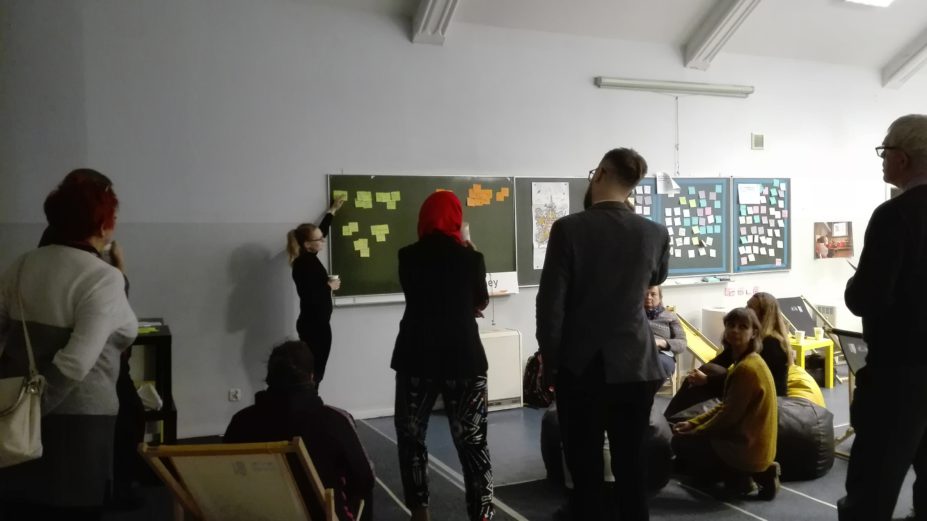Back to tools & methods
 Tools and methods
Tools and methods
- Cultural planning phase Visioning
- Purpose Creating a vision, cooperating with residents, preparation
- Participants: Residents, NGOs, companies, all age groups
- Number of participants: 5–50
- Author
UrbCulturalPlanning
Tools and methods
Creating a compass – workshops
When it is useful
During a joint workshop, residents and other people interested in the neighbourhood work on guidelines meant to help develop cultural and artistic projects in the neighbourhood. In the cultural planning method, it is important to use local resources, both material and immaterial. The workshop aims to identify important and characteristic places, materials, events, emotions, etc. of the neighbourhood, which can become points of reference for those creating artistic and cultural projects. In this way, we build a symbolic ‘compass’, which helps us navigate the successive steps of cultural planning in order to preserve the local character of the activities and their relevance for the neighbourhood.

Step by step instruction
- Invite people who live and work in the neighbourhood you are going to talk about. You can also invite other people who can be an important voice in deciding on its future
- Introduce the purpose of your work to the people taking part in the meeting. As a warm-up, you can use any method that allows participants to get to know each other and form a group. Depending on the size of the group, you can divide into smaller sub-groups of 3 to 8 people.
- Each group creates a representation of their discussion on a shared whiteboard or table. Use whiteboards, post-it notes, large sheets of paper on tables or flip charts.
- We then work out the elements of the compass: emotions, values, materials (also symbolic, e.g. water, greenery), key actors in the neighbourhood (persons, organisations, companies etc.), places, situations (activities, scenes from daily life in the neighbourhood), dates (historical, future, cyclical traditions of the neighbourhood), problems relevant for the neighbourhood and resources – material and human – that can be used for action.
- First, encourage participants to individually write down on a piece of paper as many catchwords concerning the given issue as possible. After a few minutes, each participant in the group sticks or puts a piece of paper with a catchword written on it and explains his/her choice. If others have written similar catchwords, they place them next to the first one.
- We try to choose three words for each element of the compass – the ones that appear most often are usually the most important.
- Summary and reflection can take any form. If you want to use the knowledge in further stages of the process, it is worth writing down your observations about the atmosphere, the most important questions and problems that emerged during the discussion.
- The outcomes of the workshop should be a document in text or graphic form, bringing together the selected elements of the compass.

Downloadable materials

